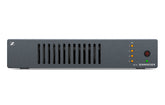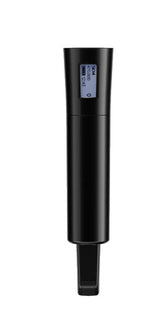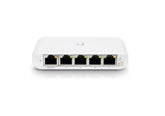How Retailers Can Improve Network Performance for Better Customer Experience
Introduction: A Fast Network = A Happy Customer
Today’s shoppers expect instant access to product info, seamless mobile checkouts, and personalized digital experiences—whether online or in-store. According to Deloitte, 76% of consumers say speed and convenience are top priorities in retail. That expectation doesn’t just apply to staff—it extends to the technology supporting every touchpoint.
In an era where point-of-sale systems, inventory management, loyalty platforms, and customer Wi-Fi all depend on connectivity, network performance is directly tied to customer satisfaction. When a connection drops, transactions slow down. When Wi-Fi lags, customers walk out. That’s why improving network performance isn’t just a technical issue—it’s a strategic opportunity for retailers.
In this blog, we’ll explore how retailers can improve network performance to elevate the customer experience. From understanding what impacts your connectivity to deploying the right infrastructure, we’ll walk you through the steps needed to make your store network a business advantage.
What Is Network Performance in Retail—and Why It Matters
Network performance refers to how reliably and efficiently your network delivers data across connected devices, users, and applications. In a retail setting, this includes everything from Wi-Fi speed and coverage to POS system uptime, device latency, and network security.
A high-performing retail network supports:
-
Fast and secure payment processing
-
Consistent inventory updates between systems
-
Real-time analytics from foot traffic sensors
-
Smooth operation of digital signage and surveillance
-
Reliable guest Wi-Fi access
Poor performance, on the other hand, can cause:
-
Slow checkouts and payment failures
-
Employee frustration due to lagging systems
-
Broken loyalty or rewards program integrations
-
Disrupted communication between departments or locations
In a world where customers expect digital convenience, a sluggish or unstable network directly translates to lost sales and reduced satisfaction.
Benefits and Use Cases of Improving Retail Network Performance
Faster, More Reliable Transactions
Lagging POS terminals and mobile card readers frustrate customers and reduce throughput. A robust network ensures real-time payment authorization, inventory updates, and receipt printing without delays.
Use Case: A busy fashion retailer optimizes in-store networking so employees can ring up sales from handheld tablets during peak hours—reducing wait times and abandoned purchases.
Enhanced In-Store Digital Experience
Digital signage, smart mirrors, touch-enabled displays, and mobile checkout stations all rely on fast, reliable connectivity. A high-performance network ensures these technologies work seamlessly—enhancing the customer journey.
Use Case: A cosmetics store uses connected kiosks that let shoppers scan QR codes to receive personalized product recommendations. With improved bandwidth and low latency, the experience feels instant and engaging.
Real-Time Inventory and Omnichannel Coordination
Retailers that offer buy-online-pickup-in-store (BOPIS) or same-day delivery depend on constant, accurate data syncs across systems. Poor network performance can lead to mismatched inventory, missed pickups, or canceled orders.
Use Case: A national electronics chain upgrades to a centralized networking solution to synchronize real-time inventory updates across all locations and their e-commerce site.
Secure, Fast Guest Wi-Fi
Retailers offering customer Wi-Fi can collect data, push notifications, or drive app downloads. But if the network is slow or unsecured, it can hurt brand trust and usability.
Use Case: A grocery chain provides customers with secure, high-speed Wi-Fi and uses analytics from guest logins to improve store layouts and send relevant promotions.
Explore enterprise-grade networking and connectivity hardware designed for retail environments.
Challenges and Considerations
High Device Density
Retail spaces are becoming more connected—featuring barcode scanners, tablets, security cameras, digital displays, smart shelves, and IoT sensors. Each device increases network traffic and complexity.
Solution: Deploy access points with MU-MIMO (multi-user, multiple input, multiple output) and Wi-Fi 6 capabilities to support high device density and reduce interference.
Legacy Infrastructure
Outdated routers, unmanaged switches, or old cabling can severely limit speed, stability, and security.
Solution: Conduct a network audit to identify bottlenecks, and plan an upgrade with PoE switches, structured cabling, and cloud-managed access points.
Coverage Gaps and Dead Zones
Poor signal coverage results in unreliable connections, dropped devices, or dead zones that impact customer and employee experience.
Solution: Perform a site survey to map coverage and install additional access points or mesh networks where needed.
Security and Compliance Risks
Retail networks process payment data and customer information, making them prime targets for cyberattacks. Poorly secured Wi-Fi can compromise sensitive data and compliance with regulations like PCI-DSS.
Solution: Use firewalls, VLANs to segment networks (guest vs. internal), strong encryption (WPA3), and enforce access controls across devices.
Bandwidth Limitations
Streaming, connected devices, and high-resolution displays can overwhelm limited bandwidth—causing congestion and latency.
Solution: Prioritize traffic using QoS (Quality of Service) settings and monitor usage with centralized network management platforms.
How to Improve Network Performance in Retail Environments
Step 1: Conduct a Network Assessment
-
Identify current network hardware (routers, switches, cabling)
-
Map device types and quantities
-
Note high-traffic and dead zones
-
Analyze traffic patterns and peak usage times
A clear view of your network helps define what needs upgrading and where to place devices.
Step 2: Upgrade to Wi-Fi 6 and PoE Infrastructure
Wi-Fi 6 offers:
-
Higher data rates and reduced congestion
-
Better performance in dense environments
-
Improved battery life for connected devices
Power over Ethernet (PoE) lets you deploy devices like cameras, access points, and digital signage without extra electrical wiring.
Step 3: Use Cloud-Managed Network Tools
Solutions like Meraki, Ubiquiti, or Aruba allow you to:
-
Monitor traffic in real time
-
Push updates and security patches
-
Set device or application-level policies
-
Access analytics on network usage
This reduces manual oversight and enables smarter resource allocation.
Step 4: Segment Your Network
Separate business-critical systems from guest Wi-Fi to reduce congestion and increase security. Use VLANs to control access and enforce role-based permissions.
Tip: Set bandwidth limits on guest Wi-Fi to preserve performance for core retail operations.
Step 5: Automate and Optimize Bandwidth Allocation
Use routers and switches with intelligent QoS to prioritize traffic for:
-
POS systems
-
Inventory management tools
-
Video surveillance
-
Customer-facing technologies
This ensures essential applications stay fast and responsive even during high-traffic periods.
Step 6: Plan for Scalability and Redundancy
As your store grows or adds new tech (like AR displays or mobile checkout), your network must scale.
-
Add modular switches
-
Use failover internet connections
-
Deploy mesh access points for seamless roaming
FAQs
How fast should a retail network be?
For most retail operations, a speed of 100–500 Mbps per location is sufficient. High-traffic stores or those with digital signage or video surveillance may need 1 Gbps or more.
Can I use residential-grade networking gear?
Residential routers often lack enterprise features like VLANs, traffic prioritization, and advanced security. Investing in business-grade hardware ensures scalability, uptime, and compliance.
How often should retailers audit their network?
Perform a basic network check every 6–12 months, and a full audit when adding new systems, expanding the store, or experiencing performance issues.
Conclusion: Build a Network That Matches Your Brand Experience
In 2025, a retail brand isn’t just built on price or product—it’s built on experience, and your network plays a huge role in delivering it. From smooth mobile checkouts to connected product displays and customer Wi-Fi, your technology infrastructure is part of the shopping journey.
By prioritizing network performance, you not only avoid downtime and frustration—you create the kind of responsive, modern environment that keeps customers coming back.
Ready to upgrade your store network?
Explore our collection of high-performance networking products, AV solutions, and surveillance systems at SportsGeekUSA today.











